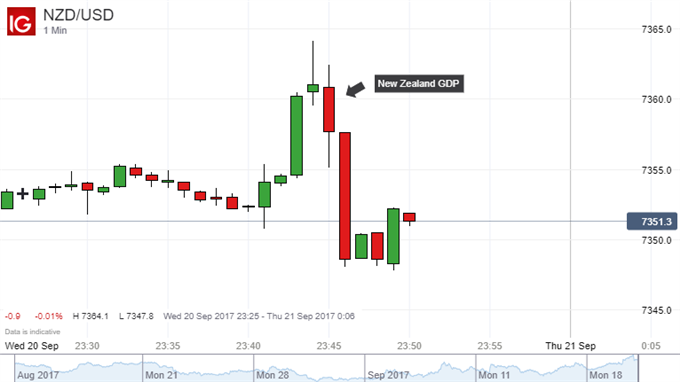Talking Points:
- Second quarter y/y and q/q New Zealand GDP data released in-line with expectations
- The New Zealand Dollar took a hit, albeit relatively minimally in response to the data
- Considering the RBNZ’s monetary policy stance, the data probably disappointed hawks
Just started trading NZD/USD? See our beginner guides to help build your strategy!
The New Zealand Dollar took a relatively small hit against its major counterparts following the second quarter GDP release. New Zealand’s economy expanded at 2.5 percent y/y as expected and at the same pace as in Q1. Quarter-on-quarter, growth was also in-line with expectations of 0.8 percent.
For a developed nation, 2.5 percent growth could be argued for as a healthy pace. In addition, the country’s GDP certainly stands out as being one of the fastest expanding of the major nations. Yet, the Kiwi seemed to be unimpressed. Taking a look at interest rate expectations and the RBNZ’s policy statement can help unravel this response.
Starting with the latter, in its most recent monetary policy statement, the Reserve Bank of New Zealand forecasted that GDP is expected to improve going forward. In addition, the central bank said that numerous uncertainties remain and that policy may need to adjust accordingly.
Meanwhile, overnight index swaps are pricing in that the RBNZ will increase its benchmark lending rate at least once over the next 12 months. Taking these factors into account, an in-line GDP reading that is counter to the trend the central bank expects might explain why the New Zealand Dollar didn’t take the data kindheartedly.
Nevertheless, we might find out just what the Reserve Bank of New Zealand thinks of this at its next interest rate announcement on September 27, just a week away.







